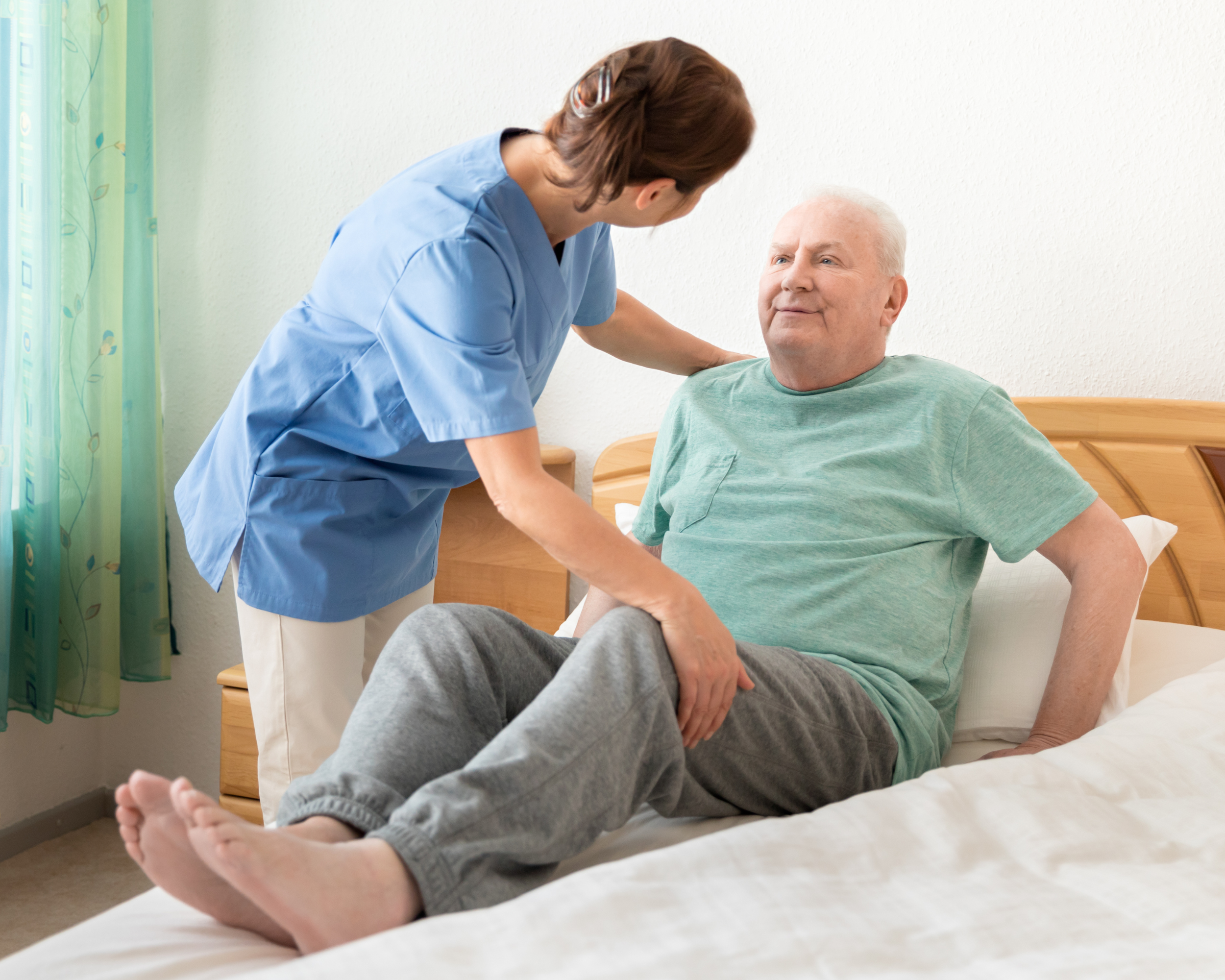Bed alarms and chair alarms for the elderly are essential tools for preventing falls and wandering, ensuring the safety of seniors at home, in nursing homes and hospitals, or in assisted living facilities. These monitoring devices alert caregivers when an elderly fall-risk individual attempts to get out of a bed or chair, allowing for timely intervention. There are various types of alarms available, including wireless models and wired pressure pad alarms. It is important to understand how these safetydevices work and how they can be effectively integrated into a fall prevention strategy.
The Risks of Falls Among the Elderly
Falls pose a significant risk to seniors, with one in four older adults experiencing a fall each year. To protect our elderly loved ones, it is vital to adopt effective fall prevention strategies, including the use of bed and chair alarms. Innovative devices like bed exit alarms, chair alarms, and wheelchair alarms serve as crucial safeguards, notifying caregivers when a fall-risk patient attempts to leave their bed or chair. By implementing these measures, we can dramatically reduce the likelihood of falls, ensuring a safer environment for our seniors and giving families peace of mind.
Understanding Elderly Wandering
Wandering among seniors with dementia is a prevalent issue that can result in serious risks. Implementing bed sensor alarms and fall prevention strategies is crucial for caregivers looking to safeguard their loved ones. Bed alarms are useful in both home settings and professional care facilities, providing immediate alerts when an individual attempts to stand. This allows caregivers to act swiftly, ensuring the safety and well-being of those they care for. Investing in these safety measures not only promotes a secure environment but also brings peace of mind to families and caregivers alike.
What Is a Bed Alarm?
A bed alarm is a device designed to detect when someone tries to get out of bed, alerting caregivers with an audible sound. Some models offer multiple alarm tones to choose from. These safety aids are valuable in nursing homes, hospitals, assisted living facilities, and even at home, especially where caregivers cannot be present around the clock to monitor patients at risk of falling.
Types of Bed Alarms
- Pressure Pad Alarms: These bed sensor alarm pads are placed under the bedsheet, beneath the patient’s buttocks or upper back. A caregiver alert is triggered when pressure is removed from the pad as the senior attempts to get out of bed.
- Wireless Bed Alarms: Wireless bed and chair alarms, such as the Secure Wireless Patient Monitoring System and the Secure Caregiver Alert System, utilize wireless technology to send remote alerts to caregivers, even from afar. The alarm monitor can be relocated from the patient room to the nurse station or any other location where the caregiver needs to monitor the patient. The Caregiver Alert System also includes a wireless pager that allows caregivers to be notified from up to 500 feet away from the patient room.
- Motion Sensors: Wireless motion sensors monitor movement around a bed or doorway, making them ideal for individuals prone to wandering.
- Floor Mat Alarms: A floor alarm is an excellent addition to a facility’s fall management strategy. The floor mat is placed beside the bed, and the alarm monitor sounds when a patient steps on the mat while trying to get out of bed. This enhances patient safety by reducing the risk of falls and wandering.
- Chair Alarms for Seniors: Chair alarms and wheelchair alarms, like bed alarms, detect when a person attempts to leave their chair or wheelchair. Both wired and wireless options are available to meet your caregiving needs.
How Do Bed Alarms Work?
Bed alarms for elderly patients function by detecting movement using various technologies such as weight-sensing pressure pads, pull cords, or motion sensors. When a patient attempts to get out of bed, the alarm is triggered, allowing caregivers to respond promptly. Systems like the Secure Wireless Bed Alarm offer remote monitoring, enabling caregivers to receive alerts even when they are away from the patient’s room. Additionally, silent bed alarms are available for environments where loud alarms could be disruptive, ensuring the safety of fall-risk individuals without causing unnecessary disturbances.
Benefits of Using Bed Alarms
Using a bed alarm system for elderly care has multiple benefits:
Fall Prevention: Bed alarms can reduce the risk of falls by providing timely alerts to nurses and caregivers.
Wandering Prevention: Bed sensor alarms for seniors can notify caregivers before an elderly individual wanders off unattended.
Peace of Mind for Caregivers: With devices like bed alarms for seniors at home, caregivers can rest assured knowing they’ll be notified immediately if their loved one tries to get out of bed at any time, day or night.
Choosing the Right Bed Alarm
When selecting a bed exit alarm, consider factors such as:
- Type of Alarm: Decide between pressure sensor pads, pull-cord clip alarms, motion sensors, or floor mats depending on the senior’s needs. Wireless bed alarms provide remote monitoring and reduce alarm noise in patient rooms.
- Power Source: Some bed alarms run on batteries, while others offer an AC adapter. Make sure to choose an alarm that fits the care environment.
- Features: Look for alarms that offer customization options, such as silent or wireless alarms, like the Secure Caregiver Alert System. The best bed alarm for the elderly will depend on your specific situation.
Additionally, check the reviews for our top-rated bed alarms for seniors on platforms like Amazon and Walmart.
Are Bed Alarms Covered by Medicare?
A common question is whether Medicare covers bed alarms. Original Medicare (Parts A and B) does not cover bed alarms for fall prevention in the home, as these devices are not classified as durable medical equipment (DME) under Medicare guidelines. However, some Medicare Advantage (Part C) plans may offer coverage for medical alert systems, including bed alarms, depending on the specific plan and provider. It’s advisable to check with your specific Medicare Advantage plan, Medicaid office, or local agencies to determine available coverage or assistance programs for bed alarms.
How to Use a Bed Alarm
For bed exit alarm systems to function reliably, proper setup and maintenance are crucial. These systems play a vital role in fall prevention and patient safety, especially in settings such as nursing homes, hospitals, and assisted living facilities.
Proper Sensor Placement
To ensure accurate alerts and reduce the risk of false alarms:
Bed Sensor Pads: Place the pad underneath the bedsheet and directly beneath the patient’s buttocks or upper back—areas most sensitive to movement when a patient begins to exit the bed. Ensure the pad lies flat and is not folded or wrinkled.
Chair Sensor Pads: Position the sensor pad directly on the seat of a chair or wheelchair. Do not place any cushions, pillows, or additional padding on top of the sensor, as this can interfere with its ability to detect movement.
Floor Mat Sensors: Lay these mats beside the bed or across doorways where wandering might occur. These are particularly useful for residents who are at risk of unsupervised ambulation.
Testing and Maintenance
Regularly test the alarm monitor and all sensor components to confirm they are functioning correctly. This includes checking batteries, cables, volume levels, and ensuring the alarm is connected to any centralized alert systems if applicable.
Training and Response
Staff should be thoroughly trained on how to install, test, and respond to alarm systems. Training should emphasize:
Prompt response to all alarms, treating each alert as a potential fall risk.
Understanding how to reset or troubleshoot alarms appropriately.
Recognizing patterns of frequent alarms that may indicate a need for reassessment of a patient’s mobility or care plan.
Additional Considerations
Document the use of alarms in the patient’s care plan and reassess their need regularly.
Alarms should be part of a broader fall prevention strategy that includes risk assessments, mobility aids, and environmental safety checks.
Respect patient dignity and autonomy—use alarms in a way that supports safety without creating a sense of restriction or surveillance.
Best Bed Alarms for Seniors
When searching for the best bed alarm for seniors, it’s important to consider several factors, including ease of use, sensitivity, and comfort. Choosing a reliable floor mat alarm for the elderly or a wireless bed exit alarm enables caregivers to monitor their loved ones from a distance. Reading reviews of bed alarms for seniors can help you compare different models, ensuring you select the right option for your specific needs.
Ensuring Safety with Bed and Chair Alarms
Bed and chair alarms play a vital role in promoting the safety and well-being of elderly patients, particularly those at risk of falls or wandering. These devices serve as early warning systems, alerting caregivers when a patient attempts to leave their bed or chair unassisted, allowing for prompt intervention. By providing real-time notifications, alarms help reduce the likelihood of injuries and enhance the overall quality of care in both home and healthcare settings. When used alongside personalized care plans and proper staff training, bed and chair alarms contribute significantly to creating a safer environment for elderly individuals.



